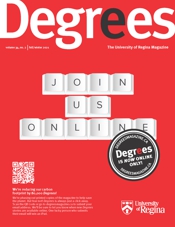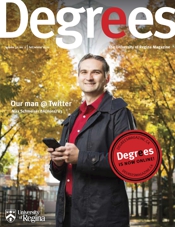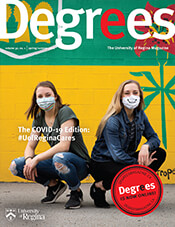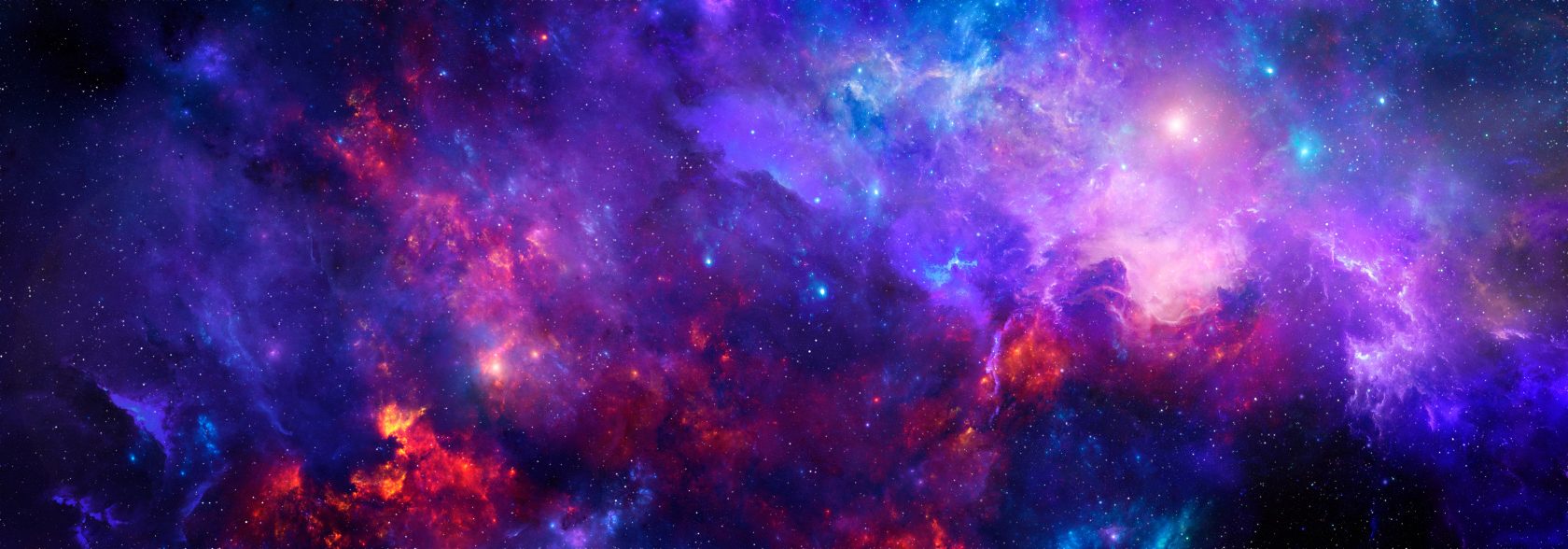
Crystals, detectors, photon showers, particle bullets, calorimeters, gluons, quarks. The world of subatomic physics is one of staggering opposites, where huge detectors capture the smallest particles known to science, the building blocks of existence. Decades-long research inches physicists along the path of discovery.
It’s a field that attempts to explain the nature of what we see, but also of what we don’t see. Physicists calculate that only five per cent of the whole universe is atomic matter. The rest is dark energy and dark matter, which make up roughly 70 per cent and 25 per cent, respectively, of everything else. In order to study these realms, also known as exotic physics or Beyond the Standard Model theories, requires powerful detectors to probe the heart of matter, and the University of Regina physics department, works with them on a regular basis.
“These are Nobel-calibre-type experiments,” says Zisis Papandreou BSc'84, MSC'89 , a professor of physics at the University of Regina and principal investigator of the GlueX Experiment at Jefferson Lab in Newport News, Virginia. “We’re trying to find out the periodic table but for particle physics. If GlueX is one of the experiments on the planet to do that, it’s a major, major breakthrough.”
Central to Jefferson lab’s research is the Continuous Electron Beam Accelerator Facility (CEBAF), one of the most powerful microscopes in the world. Surrounding CEBAF are four experimental halls, which use particle-detection systems to probe the nuclei by high-energy electrons generated by the microscope.
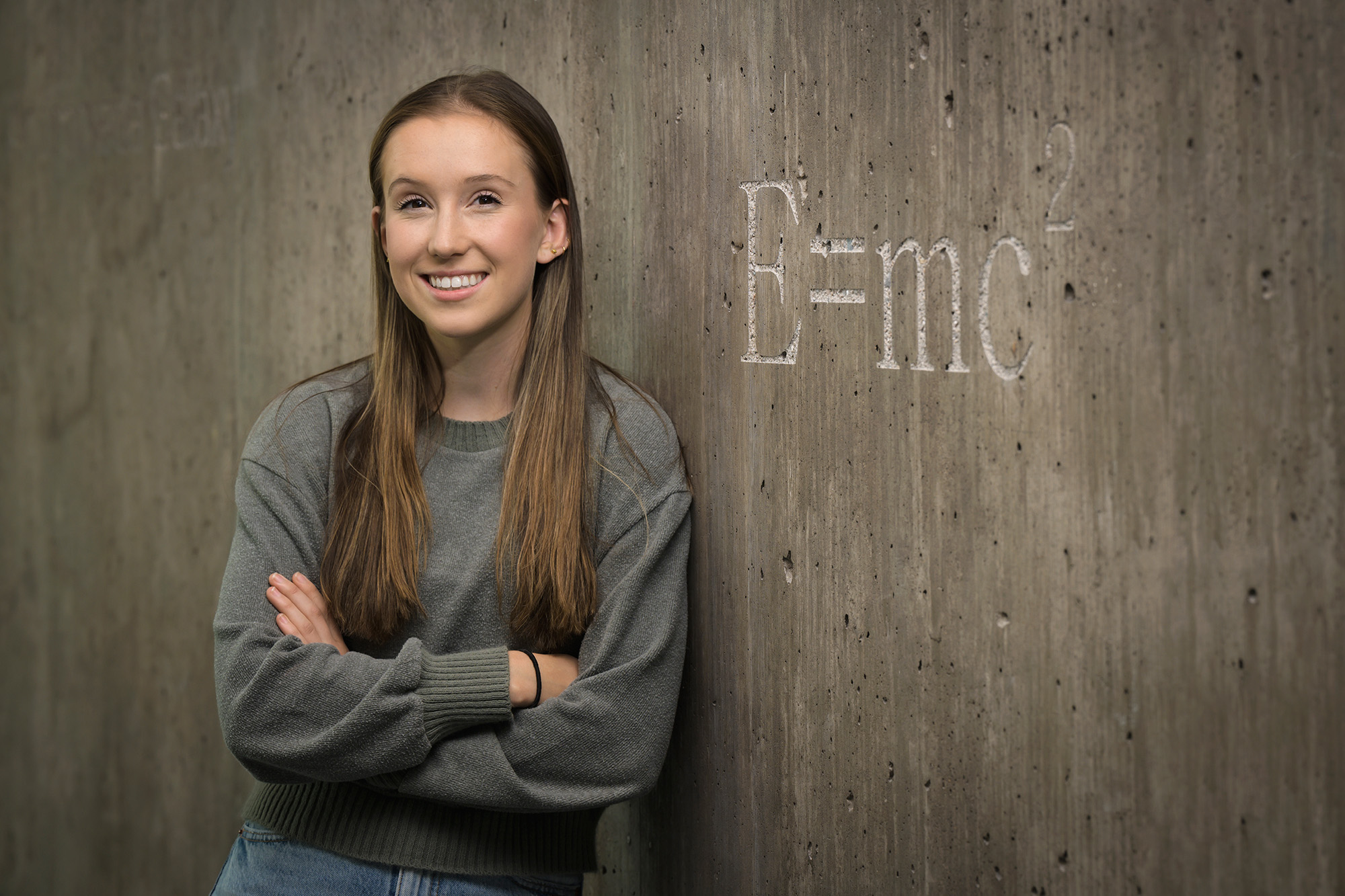
“Think of CEBAF like a race-track where the electrons are the race cars and then they peel off, with magnets in tunnels that feed into each of the four buildings or halls,” says Madelyn Kaban, a fourth-year U of R physics student, who worked at the Lab this past spring and summer in Hall D, where the GlueX detector is located.
“I sent a picture to my family and they thought it looked like the lab from Stranger Things,” she laughs.
The University of Regina has been a collaborating institution on the GlueX Experiment since 1999 with 31 other universities and 130 scientists around the world. The purpose of the experiment is to search for and study exotic particles, in particular, hybrid mesons created by what Papandreou calls the “nuclear glue” which sticks to quarks, matter’s smallest particles.
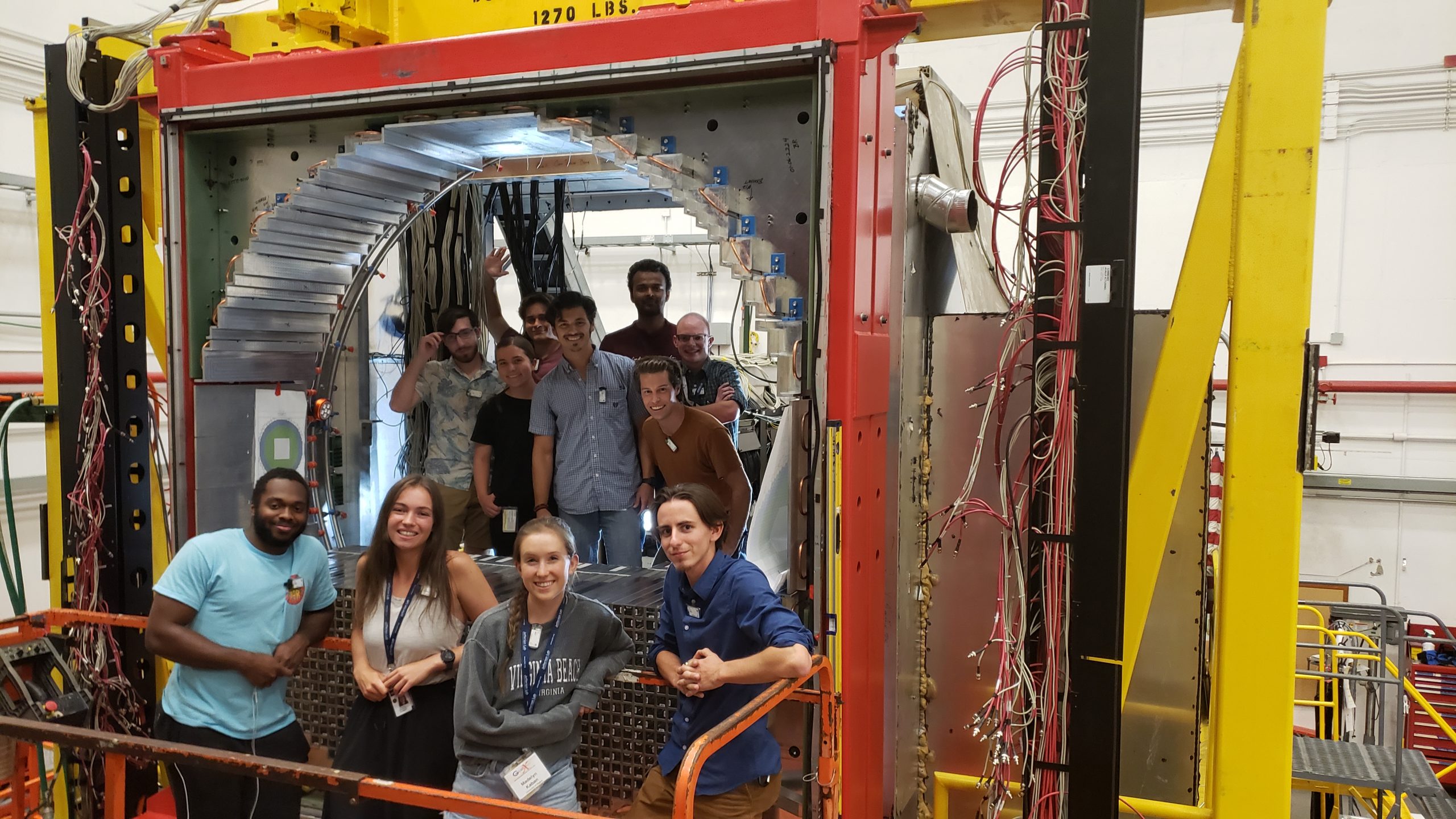
“Without this gluon field there nothing would stick together in the universe to form matter, stars and galaxies. It is a critical particle that tells us how the nuclear glue of the universe works,” he says.
In 2011, Papandreou’s group completed construction of the GlueX detector’s 23-ton $12M USD barrel calorimeter, the heart of the device, which detects, identifies, and measures the energy of neutral and charged particles. It was a major accomplishment for a small department, which worked with engineering students and industry on the design for ten years. The calorimeter was part of an upgrade at Jefferson Lab, which doubled the electron energy in the CEBAF from 6 to 12 giga electron volts. The barrel calorimeter was commissioned in 2014, and the GlueX detector has been running since 2016.
JEF Experiment and dark matter
Papandreou has no qualms about admitting that physicists don’t know much about dark energy and dark matter. Dark energy is now considered to be the driving force behind cosmic acceleration, or the expansion of the universe. It was first theorized by Einstein in 1917. He originally dismissed his own idea but when it was found that the universe is indeed expanding Einstein said that this was the “greatest blunder of his life”.
“We have no idea what this dark energy is. Physicists are so clueless on this as a field,” Papandreou says.
Dark matter, however, is a different…matter.
“We have firm evidence that it exists,” says Papandreou, “due to the rotational speed of galaxies, which is quicker than it should be based on the mass that is visible. Like a figure skater who pulls in her arms in to speed up her spin, there is mass in these galaxies affecting the rotational spin, even though we can’t see it.”
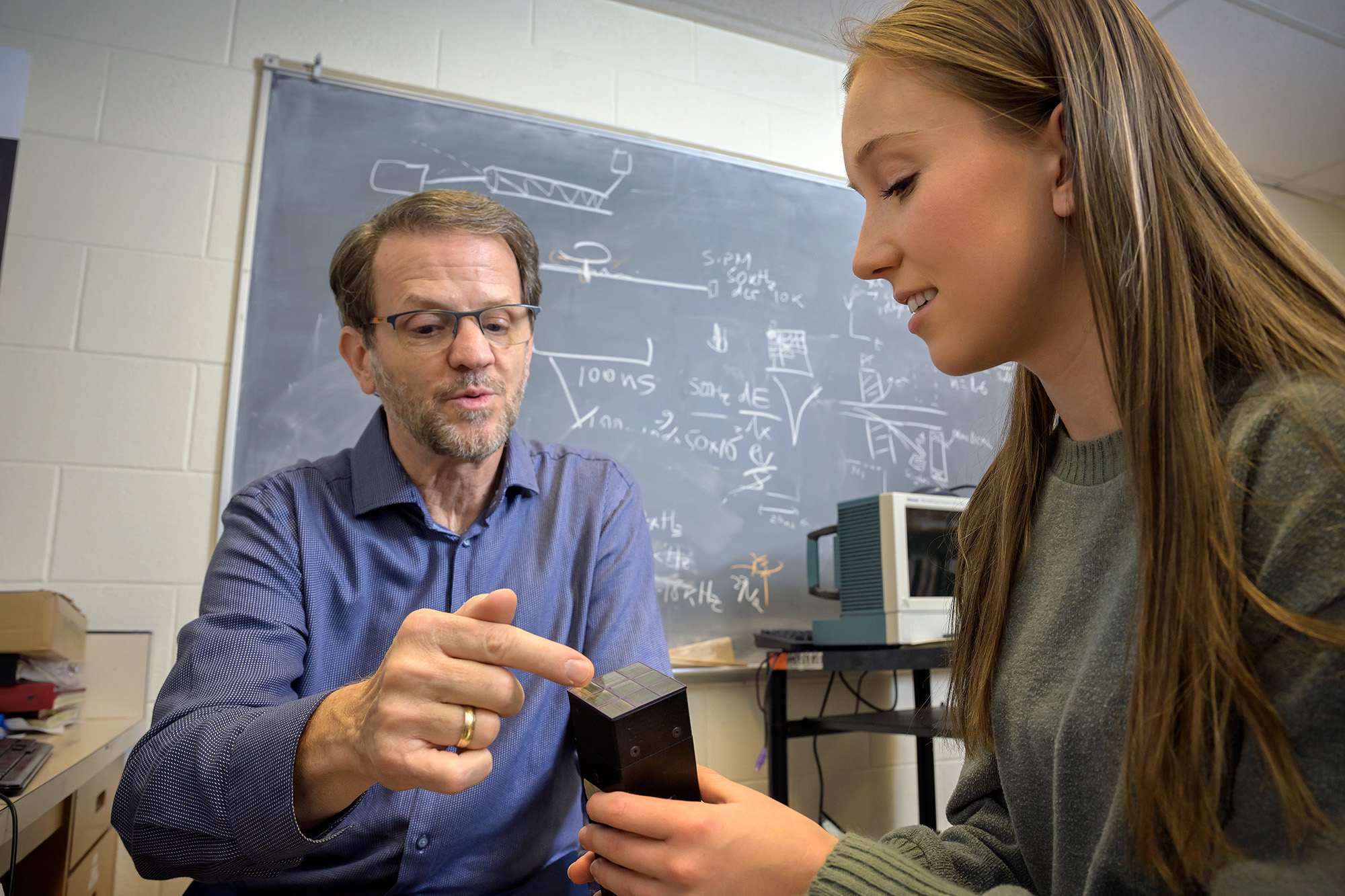
In the coming years, Papandreou’s physics students will take part in the Jefferson Eta Factory (JEF) experiment, which will search for exotic particles using the GlueX detector. JEF involves a $5 million USD upgrade to the detector’s calorimeter, which will make it more tolerant to radiation. The experiment is scheduled to run for an initial 200 days beginning in August 2024 with a chance of an extension. Analysis of the data will take years.
“The JEF experiment promises to give us better limits on dark matter and answer many other questions in nuclear physics,” says Papandreou.
Hands-on learning at Jefferson
The upgrade to the calorimeter – a wall-like device at the end of the GlueX detector that identifies neutral particles – was the focus of Kaban’s work at Jefferson Lab over the summer. From May to July, Kaban helped assemble and test materials that comprise an insert at the centre of the device, where particles are stopped and analyzed. She wrapped lead tungstate crystals in reflective material and black tedlar (a polyvinyl fluoride film that provides a long-lasting finish to a wide variety of surfaces), and attached them to photo-multiplier tubes. Kaban then tested the crystals inside a black box, charging the tubes with high voltage to ensure their quality.
Working with micrometre precision on a project with little room for error, the importance of the task wasn’t lost on Kaban.
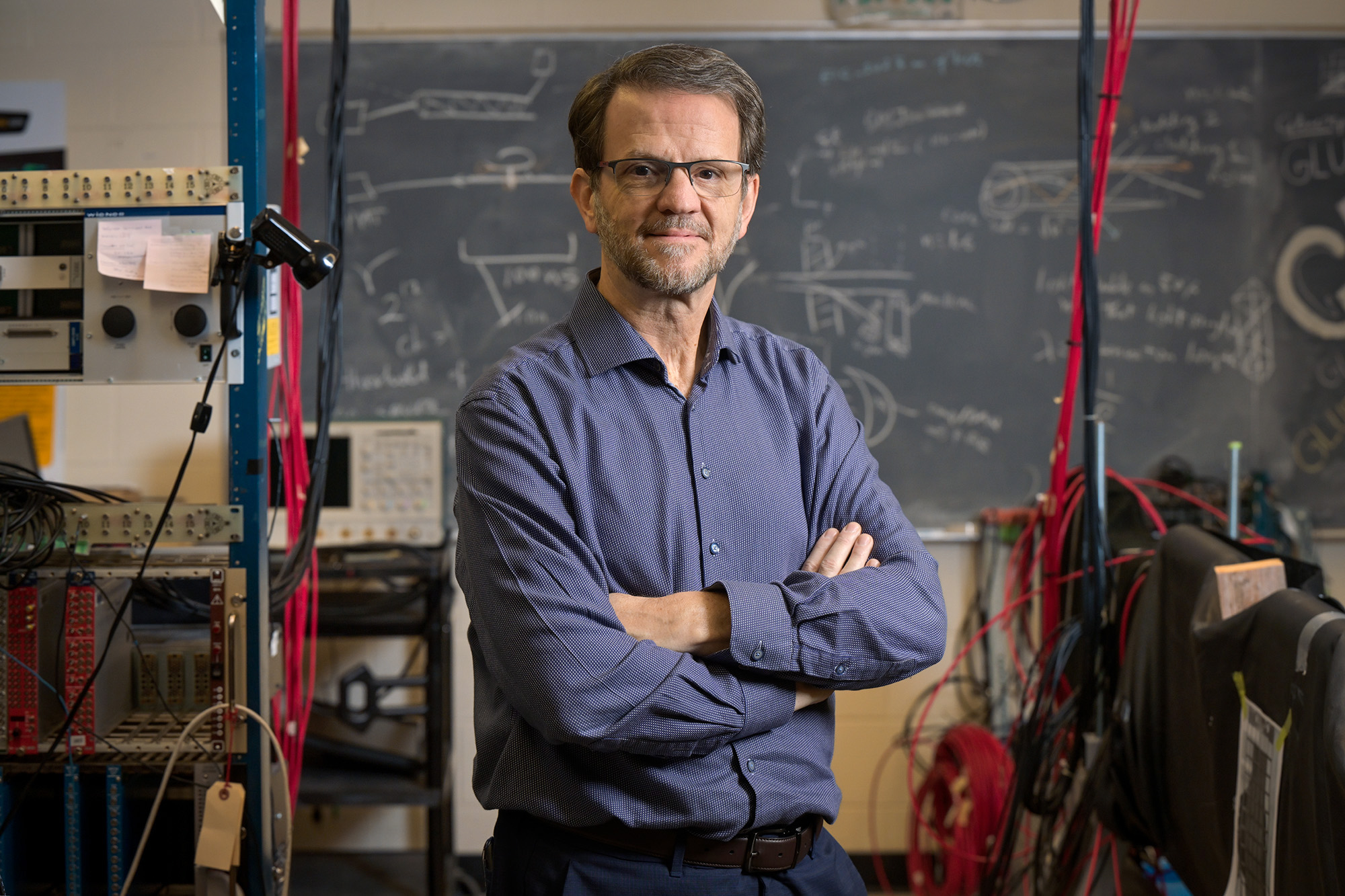
“It was scary but super cool. We would joke that each crystal was worth probably one student’s salary for the summer,” she laughs.
Kaban enjoyed staying at the Jefferson Lab residence and meeting other students, ten of whom joined her on the JEF project, all from universities in the United States. Overall, the experience gave her a greater appreciation for the physics research that comes out of Jefferson Lab.
“In subatomic physics it’s hard to visualize what you’re studying, because you can't actually see it,” says Kaban. “Seeing the lab and playing a part in building this new detector was an incredible experience.”

Contributions from Regina
Before the new forward calorimeter was even built, students in the U of R physics department were already playing a part in the JEF experiment.
As part of her master’s research over the past two years, Azizah Mahmood, who is also from Regina, ran computer software simulations to predict the behaviour of the GlueX detector with its new insert at the University of Regina’s physics lab. She created a classification scheme using machine-learning to help distinguish between two commonly confused particle showers that are captured by the forward calorimeter.
“There's certain interactions that happen that tend to be quite rare. They're harder to pick out of the noise. JEF is focussed on that,” she says.
After JEF is up and running, her simulations will be encoded into analysis software to help make recognition of particle showers easier.
“I was really keen on learning more about machine-learning and also using physics as a case study,” says Mahmood. “This project really worked out well for me because I was able to do both of those things.”
Stjepan Orešić, a U of R student from Croatia, is studying JEF for his PhD studies. In the coming months, he will also run simulations and will carry out the initial analysis pass of the JEF experiment starting next fall.
Orešić is most interested in whether there is a particle, force or geometry that connects the Standard Model (despite its shortfalls, the currently acknowledged best theory of particle physics) to BSM (Beyond Standard Model – the theoretical developments needed to explain the Standard Model). “If we get valuable results from JEF that connect the theories cleanly, it would mean a lot for nature as we understand it. Any type of discovery would be huge.”
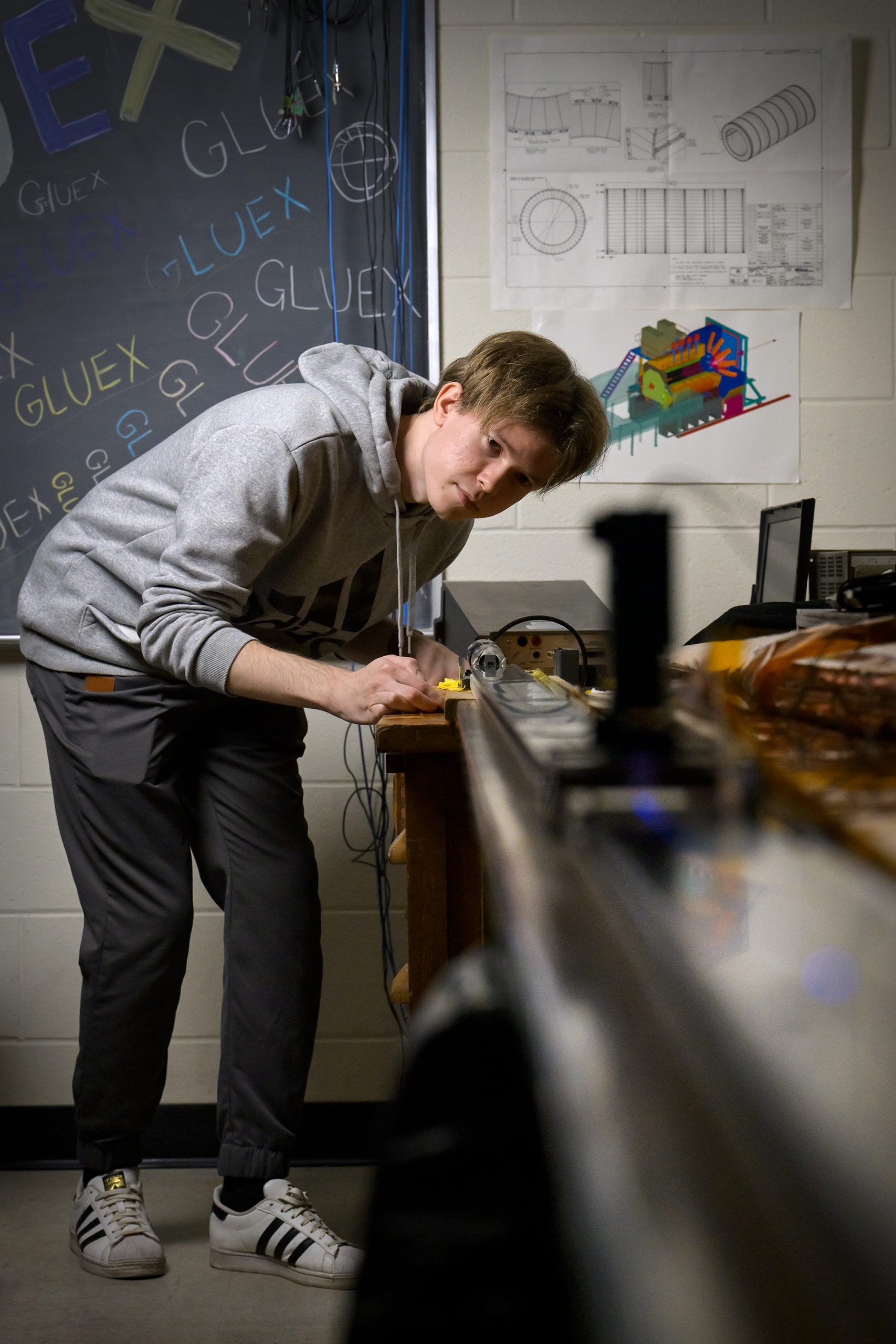
Small contributions over decades
The JEF experiment is just one example of the tag-team nature of the U of R’s work at Jefferson Lab. The long nature of the projects means dozens of students contribute to research that continues after they’ve graduated – a unique experience for both the students and the professors.
“It’s been an army,” says Papandreou, who estimates that 60 students worked on the barrel calorimeter, before GlueX was up and running. He says he remembers all of them, and even keeps a black box that a student built for him 23 years ago, for sensitive sensors. “It's been fantastic. I really love it when our students are here. I’m proud of them as a prof. I've always heard good words about them from our collaborators.”
For Kaban, Mahmood and Orešić, physics is a way to answer their questions about how nature and the universe works, something each of them has always been curious about. Orešić admits the short contributions that he and colleagues make to the work does feel like “you’re passing through,” but he says it’s the research that makes people excited, not just the answers.
Kaban admires the passion with which the physicists approach their work, even though the results may not be known during their career. “I’m very thankful for the opportunity to play a small role in that and I am excited to see what they can find.”
“I'm still a year or two away from when they would actually use any of the models that I've created,” Mahmood says. “It's very open-ended to be able to contribute something to the project that other people can build on but also use.”
Outside the box
Papandreou says the range of experiences that students encounter, from assembling hardware, to computer simulations, to data analysis gives them problem-solving skills that prove valuable when they turn to careers in academia or industry, the two main choices for physics students. He’s had students who work with pipelines, analyzing the flow of oil, and with Farm Credit Canada, assessing risk.
“For physics students, every single problem is new,” he says. “Every single problem, you are told, ‘Derive it.’ These students are hired because they can think outside the box.”
The baffling, problem-filled world of physics isn’t one that Kaban, Mahmood and Orešić, plan to leave behind anytime soon, but even if they do their work at Jefferson Lab helps us understand a little bit more about the workings of the universe. Something to be proud of, indeed.

